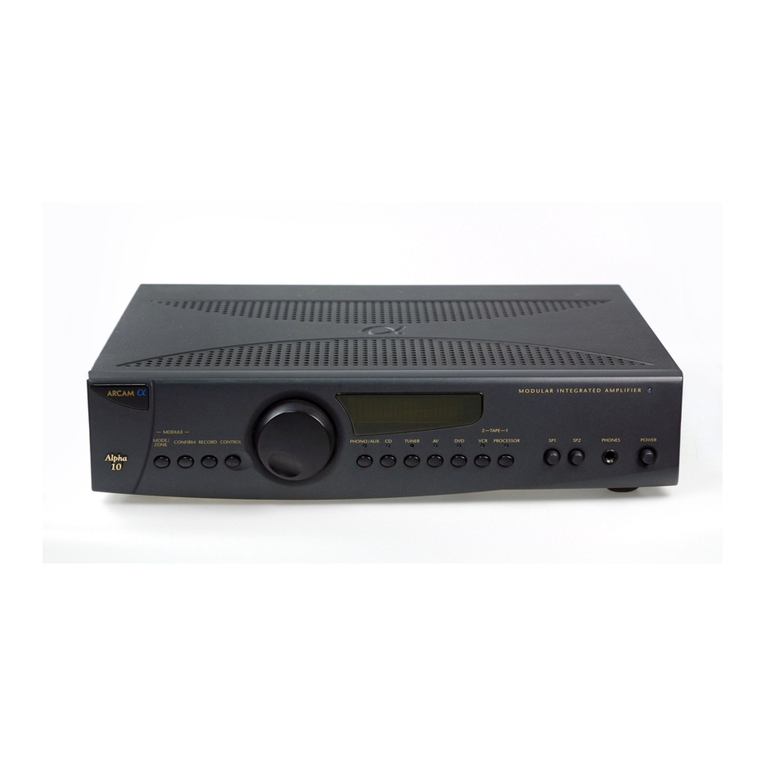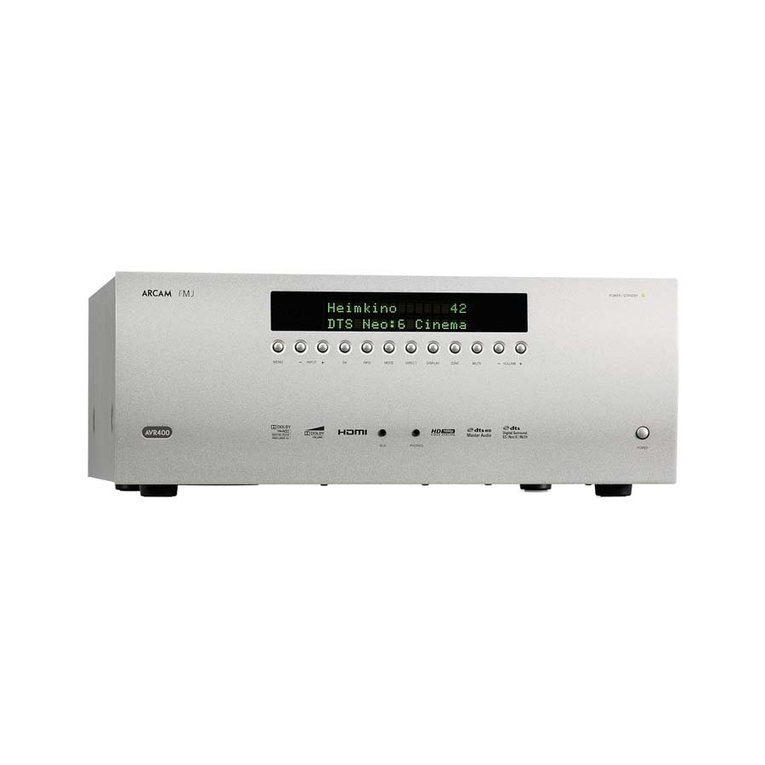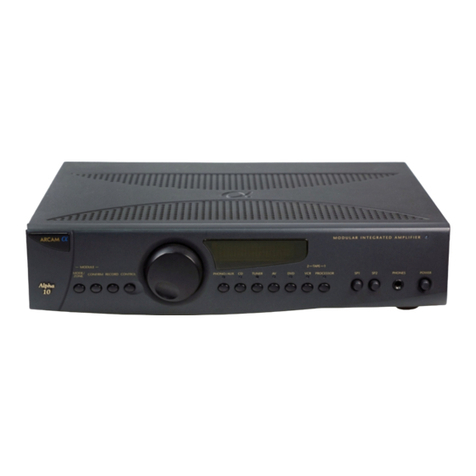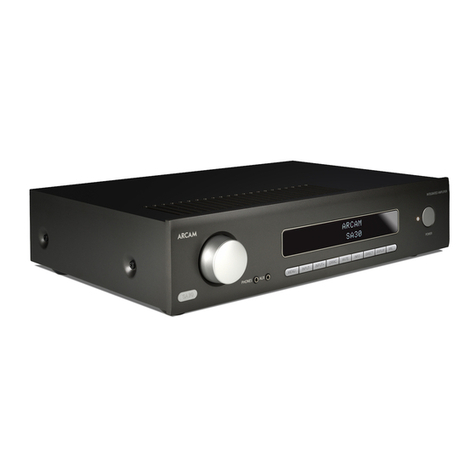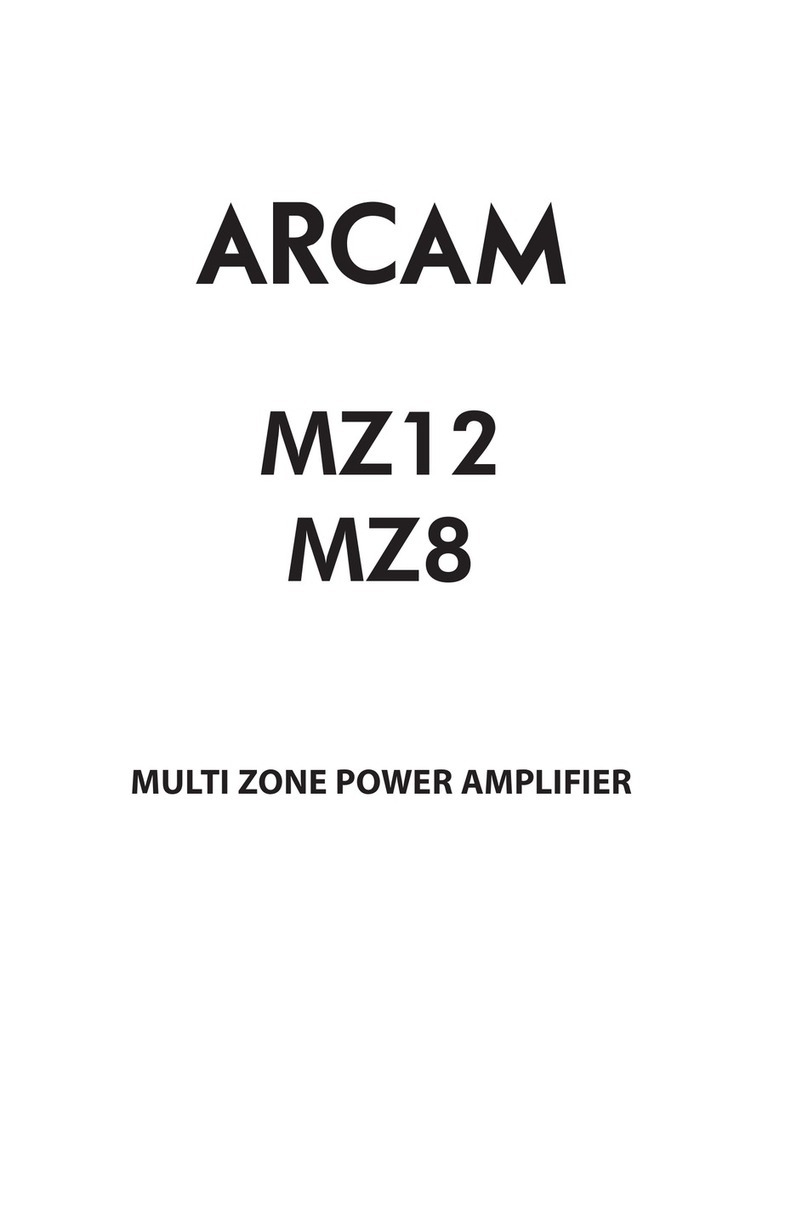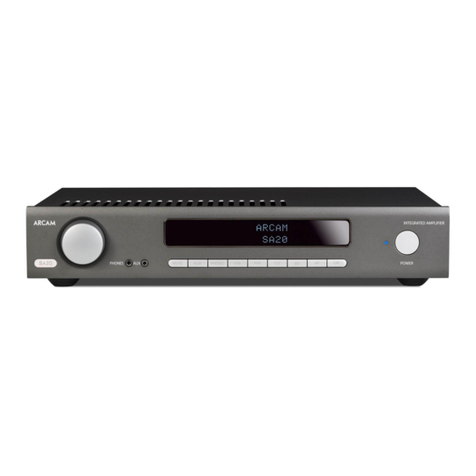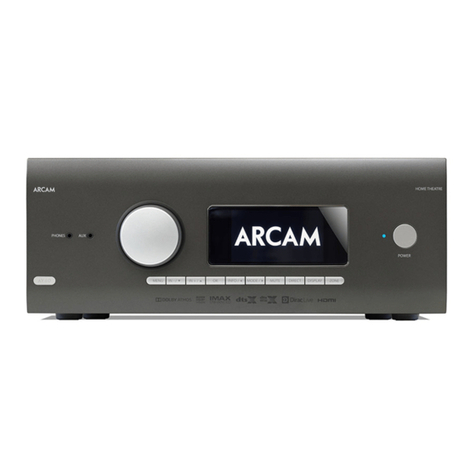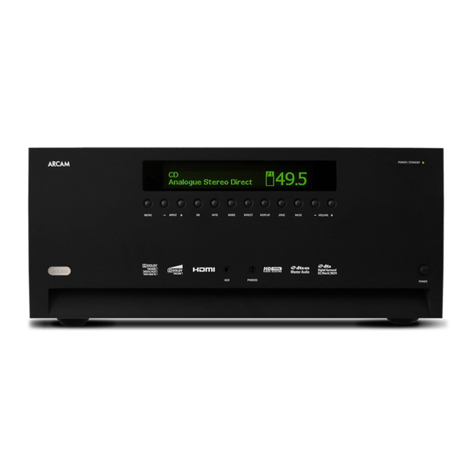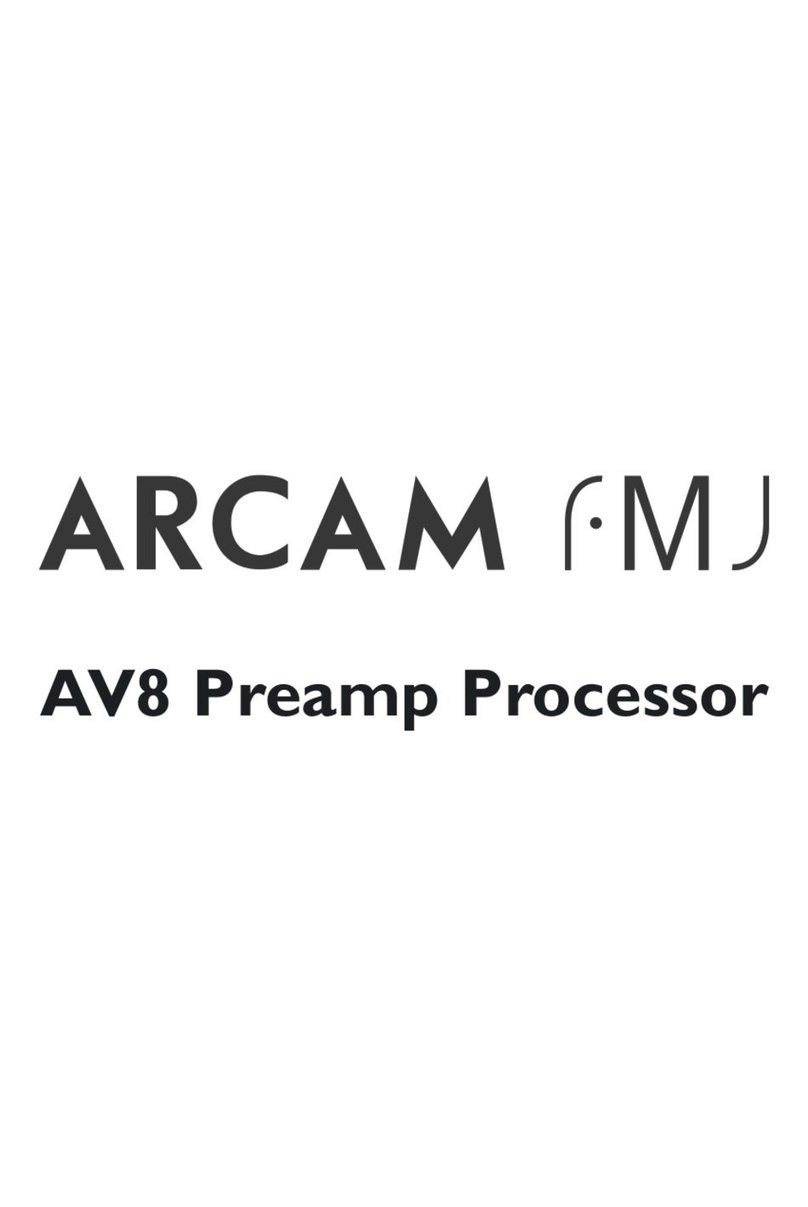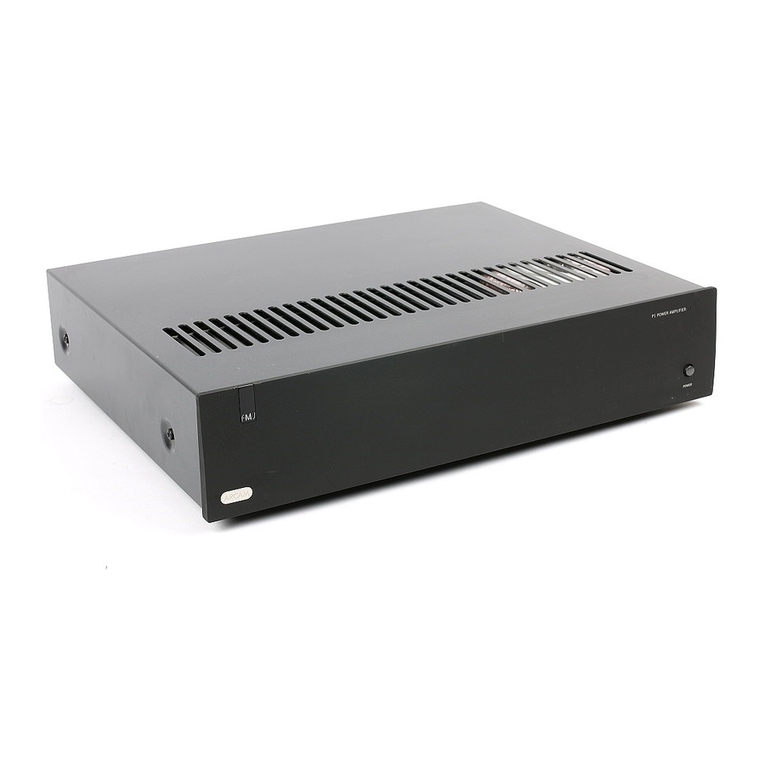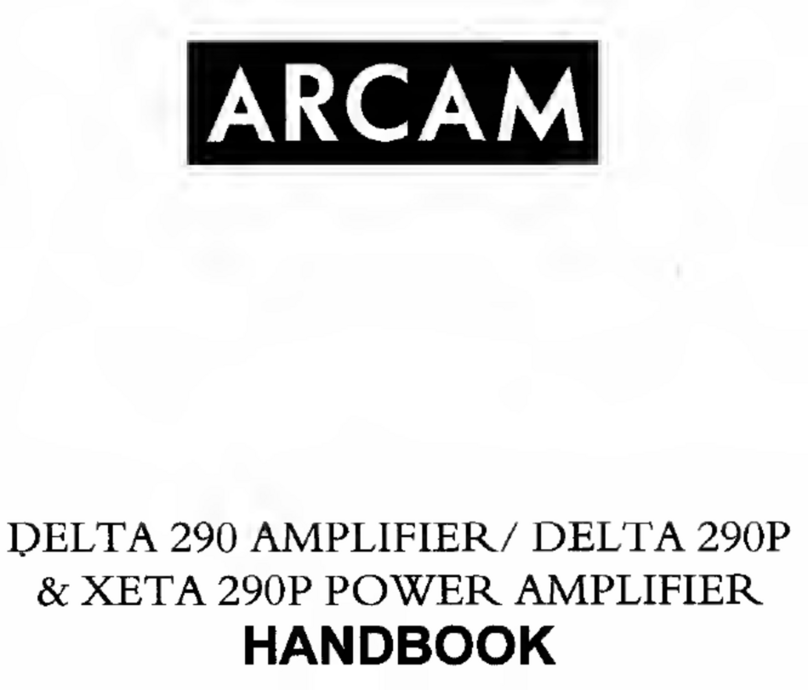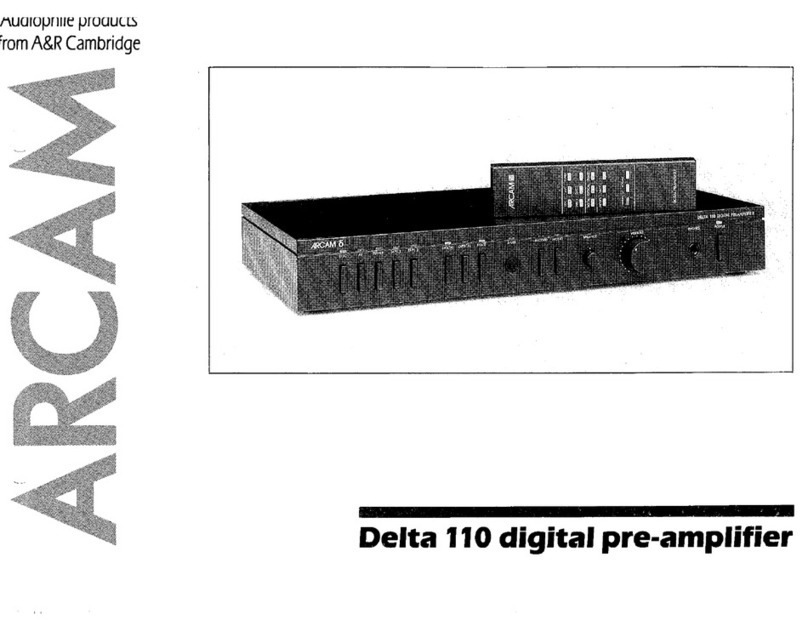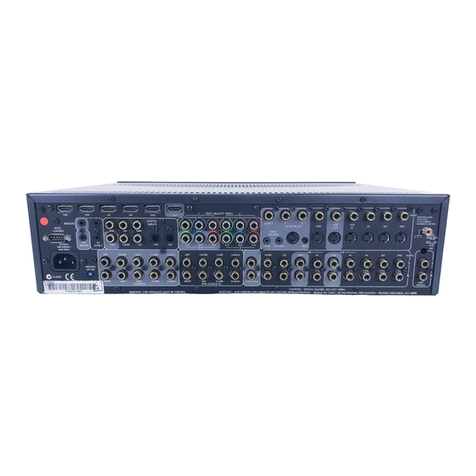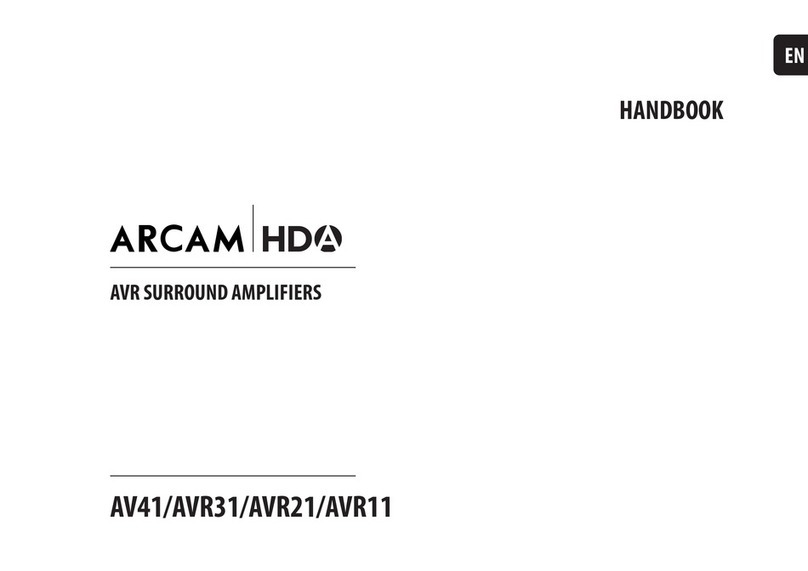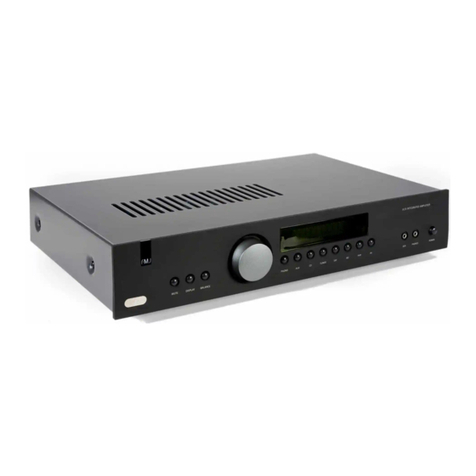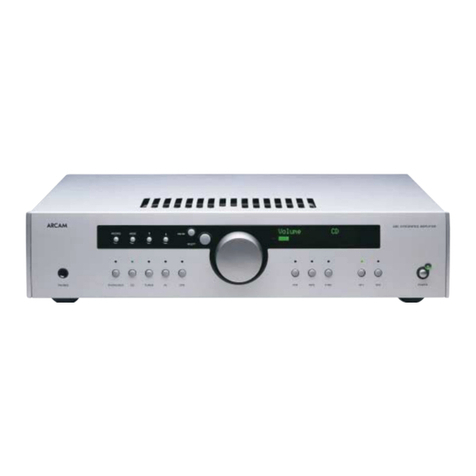Transistors TR200, TR201 and TR202 form a PNP Wilson
current mirror. Likewise TR205, TR207 and TR206 form an
NPN Wilson current mirror. The outputs of these two current
mirrors are connected together via the bias network around
TR212.
The two current mirrors combine to provide a very high-gain
current to voltage (transresistance) gain stage, which provides
all the voltage gain of the amplifier (roughly 80dB at low
frequency).
C205, C207, R221 and R222 provide the loop compensation
for the amplifier. They combine to produce an open-loop pole
at roughly 10kHz and a corresponding open-loop zero around
500kHz. This allows for good time domain performance and
clean square wave reproduction. The amplifier is designed to
be critically damped. There should be no ringing or overshoot
apparent on the output signal when a (small) step function is
applied to the input.
Diodes D200 and D202 act to limit the current through
TR202 and TR206 in the event of a fault condition. When the
input current exceeds 14mA the diodes conduct and the
transresistance stage becomes a constant current source,
killing the open loop gain and preventing damage to the
transistors.
Resistors R219 and R220 decouple the supplies for the
amplifier gain stages from the main power rails. This is to
permit the bootstrap circuit to modulate these supplies,
increasing efficiency. The bootstrap will be described in more
detail later.
TR212 provides a 4.7V bias voltage to allow the following
pre-driver stage to operate in class ‘A’. It also acts as a V
BE
multiplier for TR209 and TR214 to maintain an
approximately constant current as the ambient temperature
inside the box changes.
TR209 and TR214 form a class ‘A’ pre-driver emitter
follower stage to boost the current gain and isolate the
transresistance stage from the output transistors. This is
important to keep the loop gain of the amplifier high and thus
minimise distortion. TR208 and TR213 act as a current limit
(roughly 30mA) to prevent the destruction of TR209 and
TR214 in a fault condition.
R247, R248, R249 and R250 are to loosely decouple the
emitters of TR209 and TR214 from the output stage. This is
very important. The output devices (Sanken power
Darlingtons) have inbuilt temperature compensating diodes
which control the bias voltage to their bases. Each output
device has a 150Ωresistor so that the inbuilt diodes can
accurately control quiescent V
BE
and hence collector current
as the output power and device temperature varies. Preset
potentiometer RV200 adjusts the quiescent current. NB
Ensure that the amplifier has fully warmed up before
adjusting the quiescent current. D201 protects the output
devices from destruction in the event of the preset
potentiometer going open circuit. PL200 allows the test
engineer to measure the bias voltage (and thus collector
current).
C217, C218, C220 and C221 provide local HF stability
around the output transistors to prevent parasitic oscillation.
D204 and D205 are catch diodes to reduce the effects of
induced back-EMF in the loudspeaker load.
R254 and C223 form part of the ‘Zobel’ network that ensures
the amplifier sees a constant load of roughly 4.7Ωat very
high frequencies. This helps to improve stability and reduce
HF output noise.
C208 and C209 provide local high frequency decoupling for
the output devices.
IC200B forms the DC integrating servo. Its purpose is to remove
residual DC errors due to slight device mismatch and component
tolerances. It is configured as an inverting integrator with a time
constant of 0.47 seconds. Any positive DC offset at the output of the
amplifier will cause the output of the op-amp to go negative,
increasing the current in the negative supply pin and thus ‘pulling’
the output down to ground (and vice versa). D203 protects the
inverting input of IC200B in a fault condition.
The bootstrap circuit consists of C213, C214, R241, R242, R219 and
R220. The purpose of the bootstrap is to allow the output voltage
swing to modulate the power supply rails of the input and voltage
gain stages. This allows this circuit’s power supply voltage to exceed
the main power rails connected to the output devices, allowing the
driver stage to fully drive the output and thus give the best thermal
efficiency. The ‘bottom’ of R219 sees a peak-to-peak voltage swing
of approximately 15 volts at full output power (i.e. it goes 7.5 volts
above the rail at the peak of the cycle). The ‘top’ of R220 should see
the same voltage swing.
Sheet 3
This sheet contains the protection circuits and interface to the
microprocessor signals.
TR309, TR305 and their associated components form the
instantaneous load protection circuit for the output transistors. They
sense the voltage across the 0.22Ωemitter resistors (hence emitter
current) and the collector-emitter voltage, cutting off the base drive to
the output transistors when the collector current or device power
dissipation exceeds a preset limit.
The protection circuit is designed to allow large (unrestricted)
currents into loads of 3Ωand above but limit the current into a short
circuit or very low impedance load. C318, C319, R335 and R336
form a 2.2ms time constant, which will allow larger transients of
current delivery for a few milliseconds, to ensure that the amplifier
has a sufficiently large transient capability to drive ‘difficult’
loudspeaker loads with a music signal.
TR311 also turns on when the protection circuit activates. This
switches on optocoupler IC300B causing a fault signal to be
transmitted to the microcontroller. The microcontroller will then
switch off the output relay to protect the amplifier.
TR310, TR302 and their associated components form the DC offset
detection circuit. A positive DC offset at the output will turn on
TR310. A negative DC offset at the output will turn on TR302, thus
causing TR313 to turn on. In either case optocoupler IC300A is
switched on causing a fault signal to be transmitted to the
microcontroller. The microcontroller will then switch off the output
relay to protect the loudspeaker voice coils from overheating.
Thermistor TH300 is connected to the positive supply rail, adjacent to
the collector leg of one of the power output devices. This allows it to
sense the collector temperature of the output device. Its impedance
when cool is low, typically a few hundred ohms. In the event of a
thermal overload (above 110°C), TH300 will go to a high impedance
state. This will turn on TR301, which then turns on TR300, causing
optocoupler IC300D to switch on, sending a fault signal to the
microcontroller. The microcontroller will then switch off the output
relay until such time as the unit has cooled down to an acceptable
level (80°C or so). TR301 is configured with a small amount of
hysterisis (positive feedback) to ensure a clean signal is transmitted to
the microprocessor via IC300D.
Optocoupler IC300C is connected in series with the 3 optocouplers
mentioned above, producing an overall fault signal. This is so that the
microcontroller can determine in which module the fault has
occurred, permitting selective control of the output relay for each
module in the amplifier.
